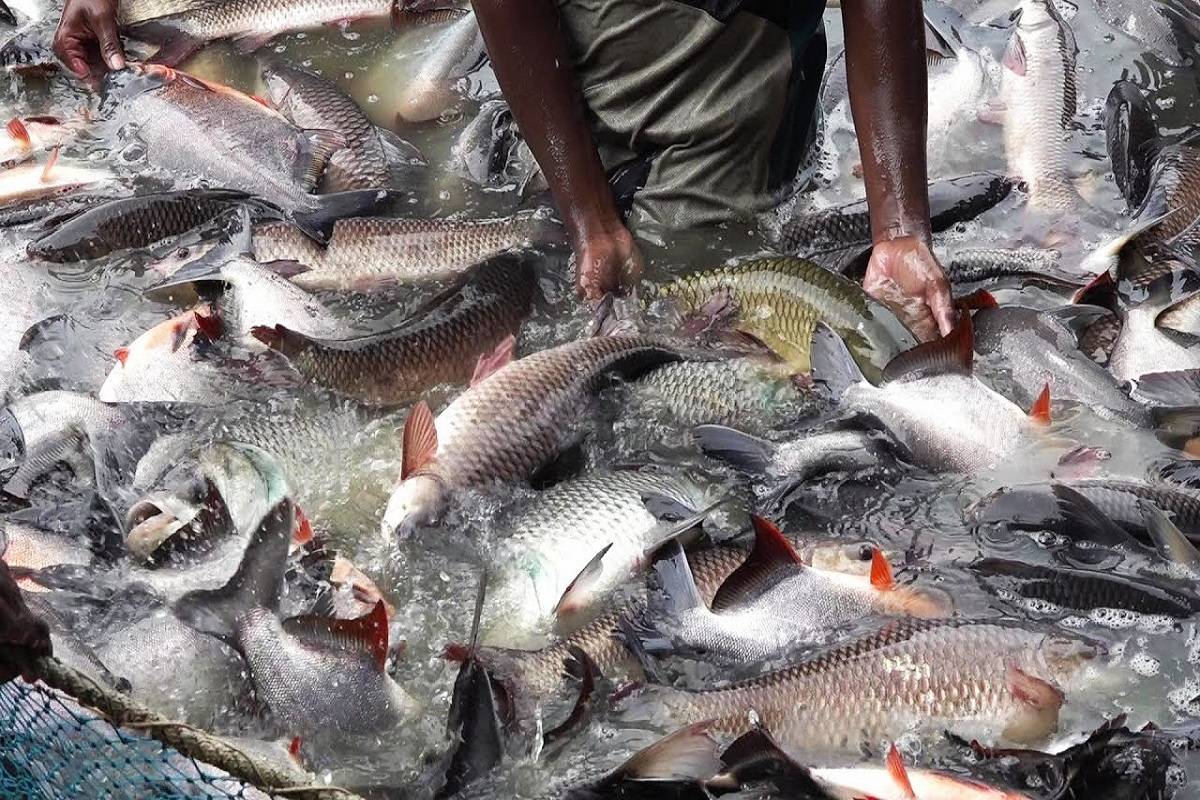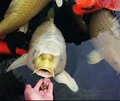
Many fish farmers nowadays lack proper knowledge about successful fish farming businesses. To earn money and become sustainable, you must keep yourself updated with the latest techniques and adopt them in your business.
Here are some typical mistakes and errors that beginners in fish farming frequently make. Fish farming has long been a successful industry, but without the correct advice and training, you might lose money and waste your time.
Common Mistakes Farmers Ignore in Fish Farming
High Fish Density Stocking
The number of fish kept in a specific area is referred to as the "stocking density" of the location. An important environmental factor that significantly affects fish rearing is stocking density. Numerous studies have demonstrated that fish development is inhibited due to stress, which is exacerbated by the high density of rearing.
Improper Feeding Time
The development rates of species with tiny bellies and continuous foraging activity, such as common carp, tilapia, and shrimp, are likely to increase with more consistent daily feeding than for species that are aggressive feeders.
Fish raised for food typically receive 1 to 5 percent of their body weight daily. Fish can be fed manually, automatically, or using feeders. To ensure that the fish are wholesome and balanced, eating enthusiastically, and also presenting no issues, many fish farmers choose to hand-feed their fish every day. See the feeding schedule chart on the product box for further information.
Improper Feeding
The fish's ability to produce is fuelled by the diet. Even if the fish have great genetics and high-water quality, if they are fed insufficiently, they won't have the energy to produce. Equally, if you give the fish too much, they won't be able to consume it all, which will result in waste, a deterioration of the water's quality, and compromised growth. Therefore, it is crucial to supply the proper quantity of feed.
Moreover, feed quality is crucial. We have seen in our hatchery that feeding fish high-quality feed leads to less size differentiation, larger fish, higher survival rates, and better water quality than feeding fish lower-quality feed in neighbouring tanks.
Fish Seed Choice
India is a major producer of mirgal, katla, and rohu. In India, these fishes are quite popular. Carp, catfish, salmon, and tilapia are the top four fish species raised in fish farms across the world.
Egg-to-spawn production takes three days, spawn-to-fry nursing takes fifteen to twenty days, fry-to-fingerling rearing takes sixty to ninety days, and fingerling-to-yearling rearing takes eight to nine months. So accordingly, the right stage of fish should be taken for rearing purposes.
Failing To Manage the Livestock
It's common knowledge that beginners want to introduce fish into their systems in the first month, keep them there until harvest size, and then take their first fish collection. This method is ineffective for several reasons, including the fact that it does not team fish according to size so the harvest consists of a range of sizes, which creates advertising issues. It also underutilizes infrastructure in the early months and fish cannot feed well at first due to low-density stress.
It is much preferable to place the fingerlings in a tiny container for a short amount of time, usually one or two months. Then they are collected and sorted by size, the slow growers are thrown out, and so forth. They are then replenished into a larger fish pond at a reduced number per cubic meter, and they are also given an additional period of 1 or 2 months before repeating the process of harvest, grading, and restocking.
Not Enough Aeration
If there are too many fish in the tank compared to the rate of oxygen replacement, oxygen levels will drop, which will slow down fish development, reduce feed utilization efficiency, and make the fish more susceptible to disease. Additionally, the biofilter bacteria will be unable to effectively convert ammonia to nitrate if there is insufficient oxygen (4 mg/l). For the fish and biofilter to work at their best, make sure there is enough aeration.
Avoiding pH And Total Alkalinity Tests
Only owners of ponds on acidic soils are affected by this. No matter how much it costs to create your pond or how much you spend on your fish, low pH and alkalinity will hinder fish productivity. Test a sample of your water, and if necessary, add some farm limestone.
Adding Wild Fish to Your Pond
Many pond owners choose to add fish from another pond or reservoir to their ponds as supplemental stocking. This frequently causes an imbalance between the populations of forage and sportfish, which can make fishing difficult. In addition, you never know if the wild fish you are bringing in is a host for a virus that causes an illness or parasite. Keep to farm-raised fodder and sport fish. Long-term, you won't regret doing it.
Using Poor Genetics
Since tilapia are quite easy to catch and breed, tilapia producers are mostly a fault in this situation. When your infrastructure is ready to collect fish, the temptation to catch the first fish you come across is strong because you want to begin farming. However, the most widely distributed fish are frequently inbred and have little economic value. In comparison to industrial strains, these fish often grow more slowly and have inferior returns (ratio of the fillet to body).
If you employ a strain that takes 5 months to reach commercial sizing vs. a strain that takes 7 months, compare the number of fish you can produce from your fish ponds in 5 years.
Conclusions:
The worst error a fish farmer might make is not having the necessary information before starting their business. A person should first educate himself before starting a fish farm. Ensure you have received all the instructions and knowledge. Connect with individuals who are already operating in the industry and join such online organizations, which is another way to learn more.












